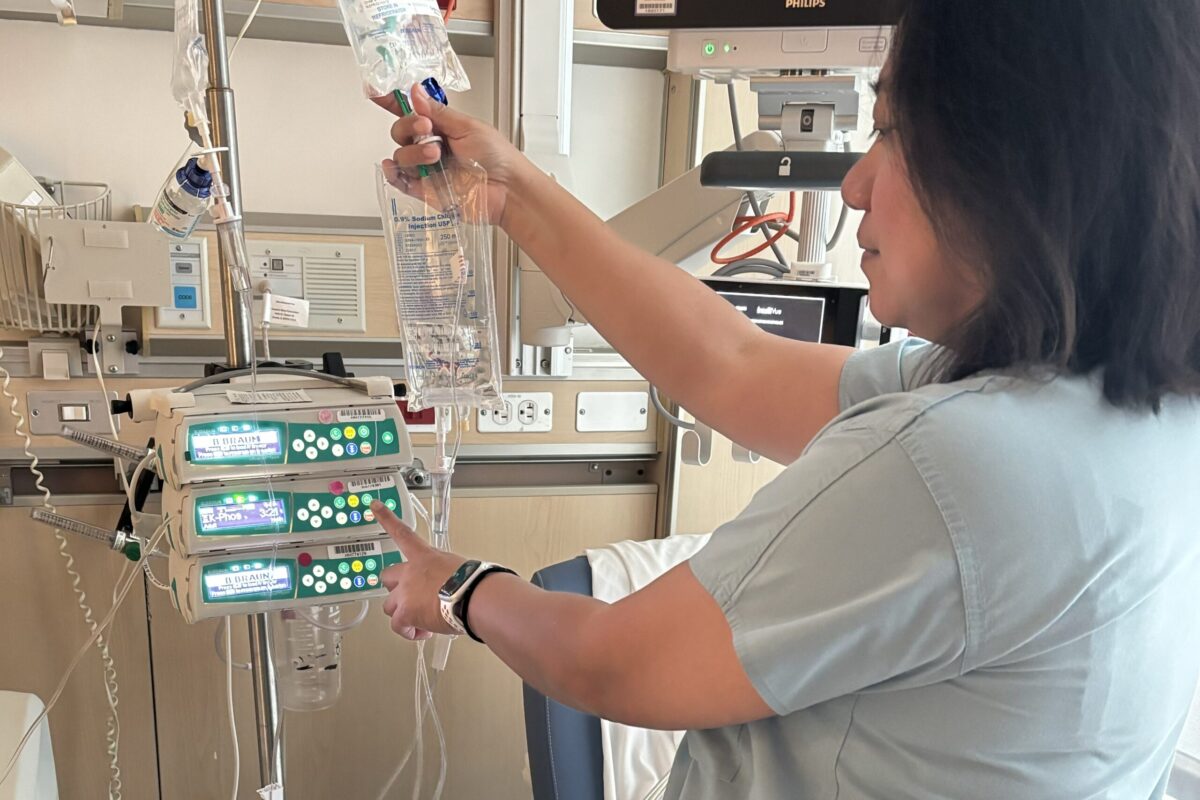
“After learning the advantage of decreasing incidences of error in medication administration, nurses appreciate the new system,” said Jovie Jabla, RN, staff nurse IV, of the B-Braun Large Volume Pump/KP HealthConnect Integration project.
The project, which started in early 2024 in outpatient infusion clinics across Northern California, supports a culture of high reliability and is part of Kaiser Permanente’s ongoing investment to enhance care-related technology to assist nurses in delivering safe and high-quality care to patients.
The smart pump interoperability/auto-programming is now being enabled in emergency departments, adult and pediatric general and intensive care units, and maternal child settings (excluding NICU) across the region and will be live at all NCAL facilities by summer 2025, according to David Boyd, DNP, RN, CNS, CPHIMS, NI-BC, Regional Director for Nursing Informatics.
“Medication use, in particular, medication infusions, are an area where safety technologies help nurses and care teams deliver best practice and reduce the potential for error and unintended patient harm,” he said.
Multiple published studies have demonstrated that this technology has led to safer administration of intravenous medications by improved drug library compliance, increased accuracy of smart pump programming, increased documentation in the electronic medical record, decreased alert overrides, and reduced total medication errors.
Admitting there was some skepticism and resistance to a process change, Jabla, pictured above, shares nurses she works with at the Richmond Medical Center, one of the pilot sites for the rollout, are seeing the benefits of the new system and improved efficiencies.
“With pump integration nurses do not need to go through the whole library of medication lists to find the appropriate setting in administering medications,” Jabla said.
Orders are input by the physician and verified in the patient’s electronic health record, and the infusion pumps are auto programmed directly from the record.
“By using this technology, it eliminates the need for the nurse to manually program the medication,” said Boyd. “As a result, increasing safety benefits to the patient by reducing potential for manual entry error.”